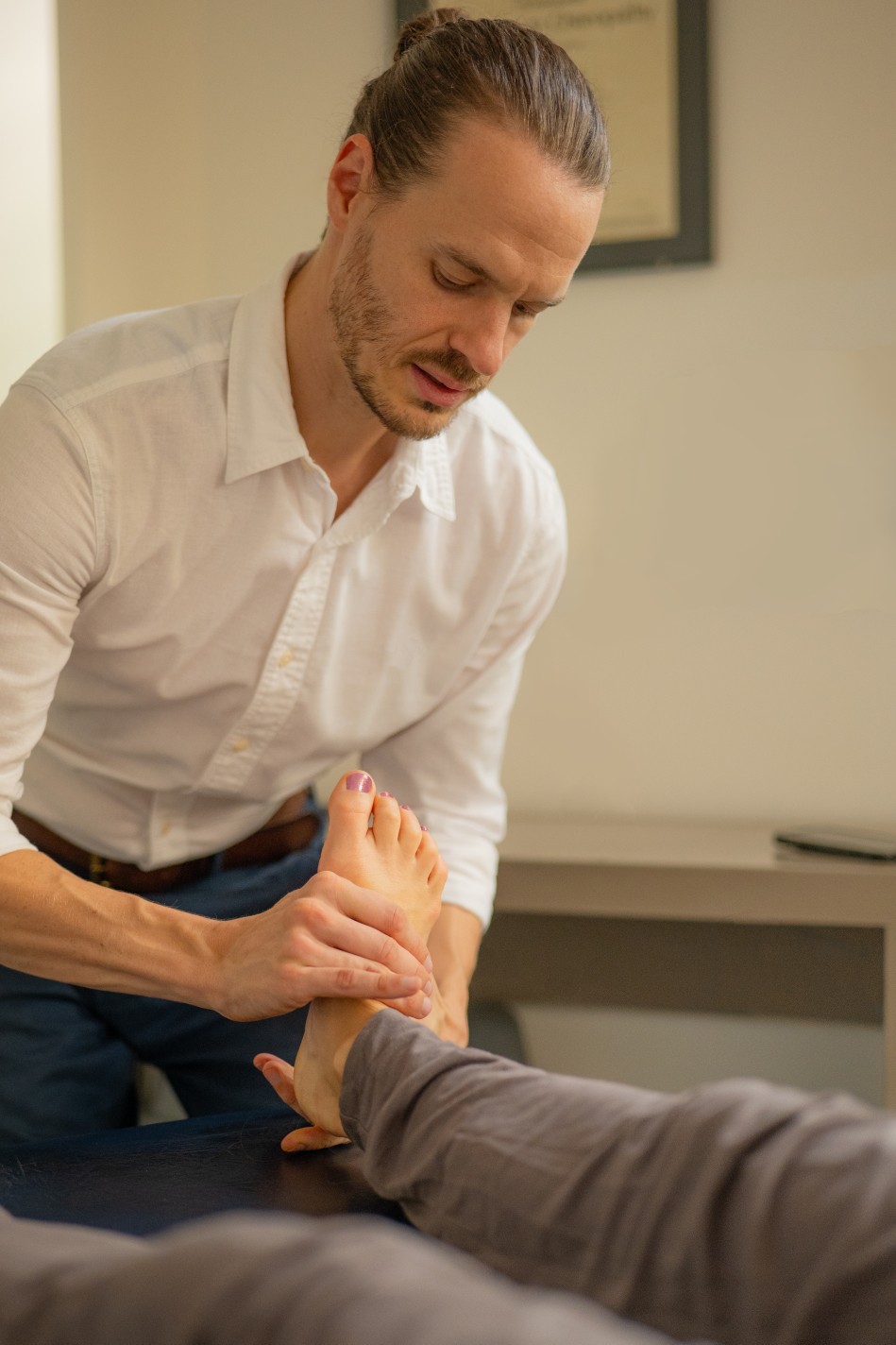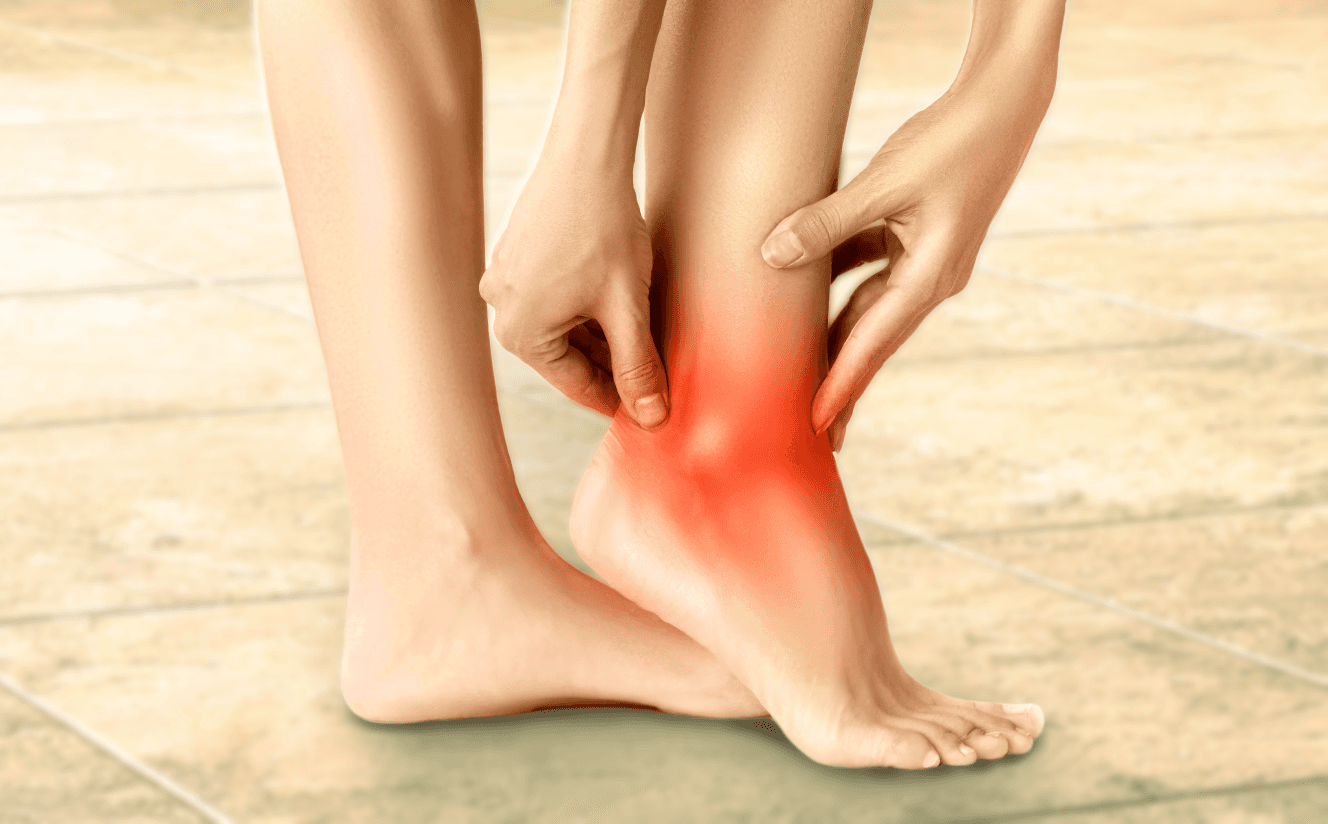Foot and Ankle - Chiropractic
Understanding Foot and Ankle Pain: A Biomechanical Perspective
The feet and ankles are remarkable structures, forming the foundation of human movement while adapting to various terrains and demands. Their intricate biomechanics not only allow for mobility and stability but also influence the function of the entire kinetic chain. Pain in this region is rarely isolated and often reflects dysfunctions in other areas of the body, highlighting the need for a holistic approach to recovery and prevention.
The Biomechanics of the Feet and Ankles
The foot is composed of 26 bones, over 30 joints, and numerous muscles and tendons, all working in harmony to manage forces and facilitate movement. The arches of the foot act as both shock absorbers and rigid levers, transitioning seamlessly between flexibility and stability during walking or running.
The foot’s ability to pronate and supinate at the right moments is critical for efficient movement. For example, during the gait cycle, the foot needs to pronate (flatten) to absorb shock and adapt to the ground, then supinate (create an arch) to provide a stable platform for propulsion. Disruptions in this cycle, such as overpronation or a rigid foot, can lead to compensatory stress in the ankles, knees, and beyond.
There is huge importance in joint coupling of the foot and ankle. The talus, for instance, plays a central role in linking foot movement with the tibia, influencing how forces are transferred up through the leg. Dysfunction at this joint not only affects the ankle but can also impact the alignment and function of the entire lower limb.
Recurrent Pain and Systemic Dysfunctions
Recurrent foot and ankle pain, such as plantar fasciitis or Achilles tendinitis, often has roots in systemic dysfunctions. For instance:
Poor hip and core stabilisation can lead to excessive internal rotation of the femur, which alters the alignment of the knee and places stress on the foot.
Limited dorsiflexion at the ankle forces compensatory motion in the midfoot, increasing strain on the plantar fascia.
Collapsed arches compromise the foot’s ability to manage forces and can create ascending stress patterns that impact the knees, hips, and the lower back.
These dysfunctions illustrate the interconnected nature of the body. Addressing foot and ankle pain requires a comprehensive assessment of the entire kinetic chain, identifying where these compensatory patterns originate.
Chiropractic Care for Foot and Ankle Pain
Function-based chiropractic care provides an effective, holistic approach to managing foot and ankle pain. Specific adjustments to the tarsal bones and ankle joint restore mobility and reduce the strain on overworked structures like the plantar fascia or Achilles tendon.
Soft tissue techniques play a vital role in releasing tension in tight calf muscles, while activating and strengthening stabilizers in the lower leg and foot. Strengthening the intrinsic foot muscles, for example, enhances the arches’ function and reduces the risk of recurrent injuries.
Chiropractic care extends beyond the foot itself by addressing compensatory patterns in the hips, knees, and core. By improving hip stability and restoring balance in the myofascial slings, care ensures that force distribution through the kinetic chain is efficient and pain-free.
Preventing Foot and Ankle Pain through Biomechanics
Prevention starts with fostering balance and alignment across the functional units that support the foot and ankle. Exercises that strengthen the intrinsic foot muscles improve arch support and stability.
Incorporating whole-body assessments ensures that dysfunctions in other regions are identified and addressed. Combining these strategies with chiropractic care creates a sustainable foundation for healthy, pain-free movement.
Foot and Ankle related Conditions
Mid foot dysfunction.
Achilles tendonitis
Plantarfasciitis.
Ankle sprains
Nerve entrapements.
Collapsing arches.

I ran half-marathon and had my best time ever. I have run half-marathons before but this time I felt that I'm ready, much stronger and very well prepared, when I was following Ed's guidance and given exercises.

